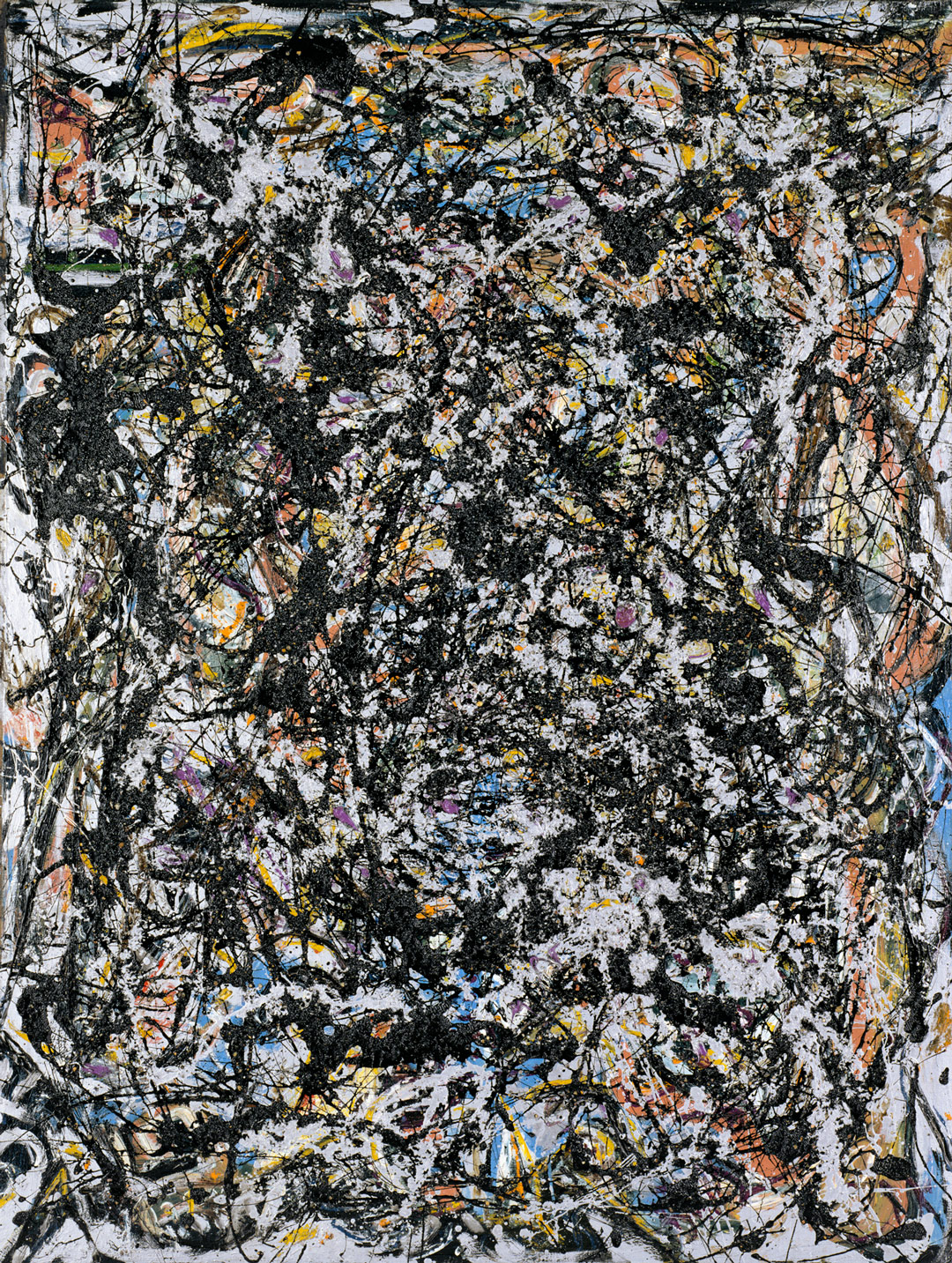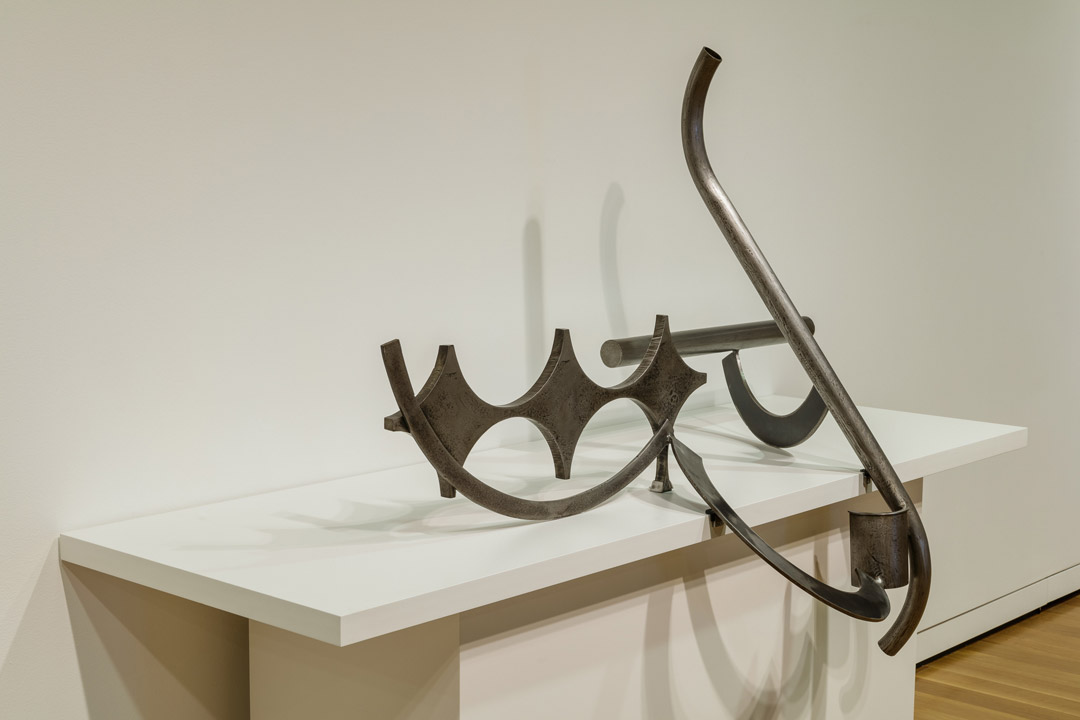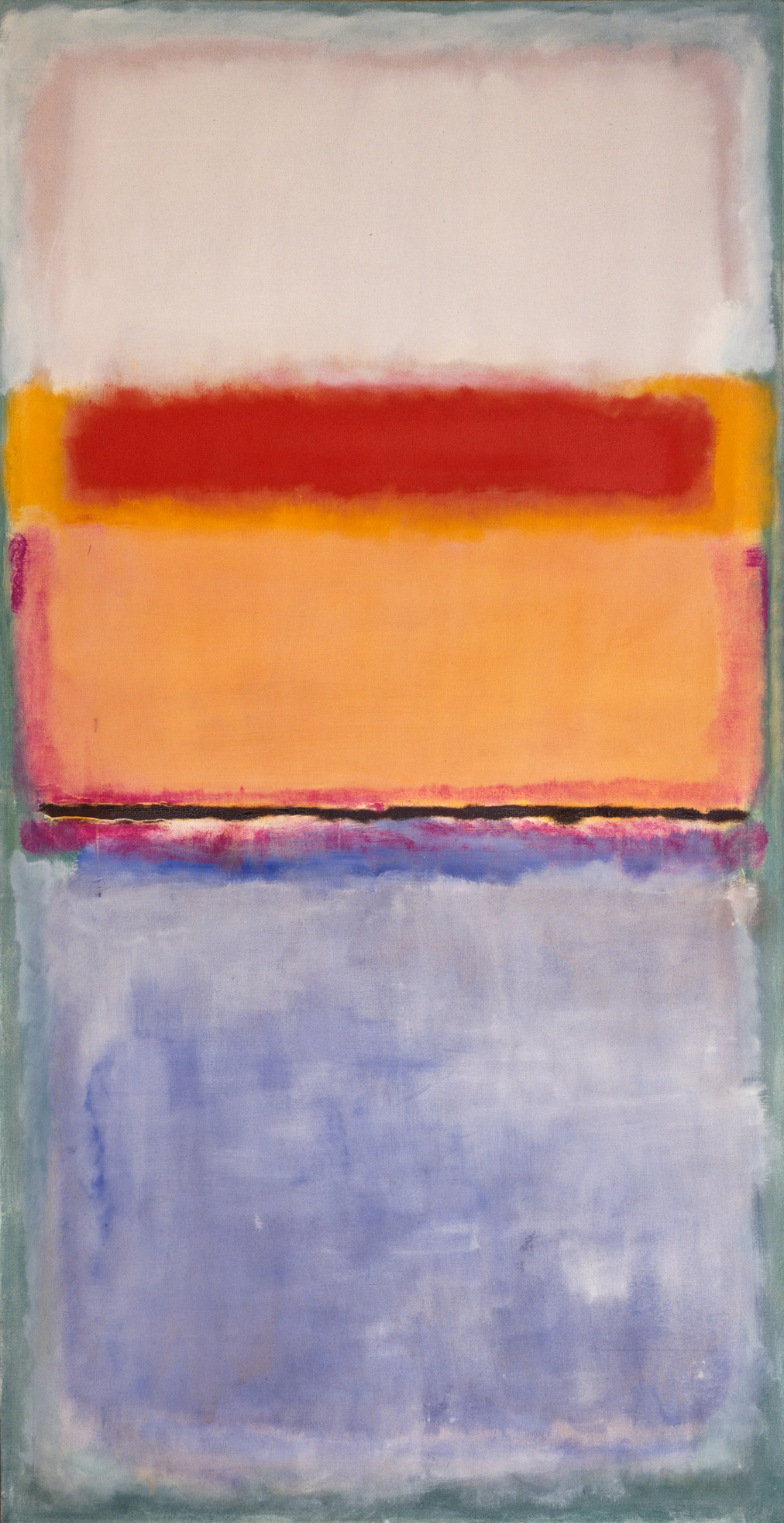Sea Change

“Modern art to me is nothing more than the expression of contemporary aims of the age we’re living in. All cultures have had means and techniques of expressing their immediate aims. . . The thing that interests me is that today painters do not have to go to a subject matter outside of themselves. Most modern painters work from a different source. They work from within.”
–Jackson Pollock
Sea Change was painted at a transitional moment in Pollock’s career. In 1947, the dripping technique he occasionally exploited as a compositional element became his dominant method. Pollock had begun this work in 1946 as an easel painting executed with a brush, using vivid blues and pinks. In 1947, he laid the unfinished painting on his studio floor, transforming it with scattered gravel, dripped aluminum and glossy black house paint.
If we typically think of Pollock’s technique as a violent, instant manifestation of “expression,” Sea Change makes us reconsider. Recent analysis and conservation reveals that he carefully preserved parts of the original composition, obscured others with dripped paint, and finally balanced the forms with precisely placed blobs of pure color squeezed straight from the tube. Sea Change embodies the artist’s intent to create an entirely new visual idiom.



